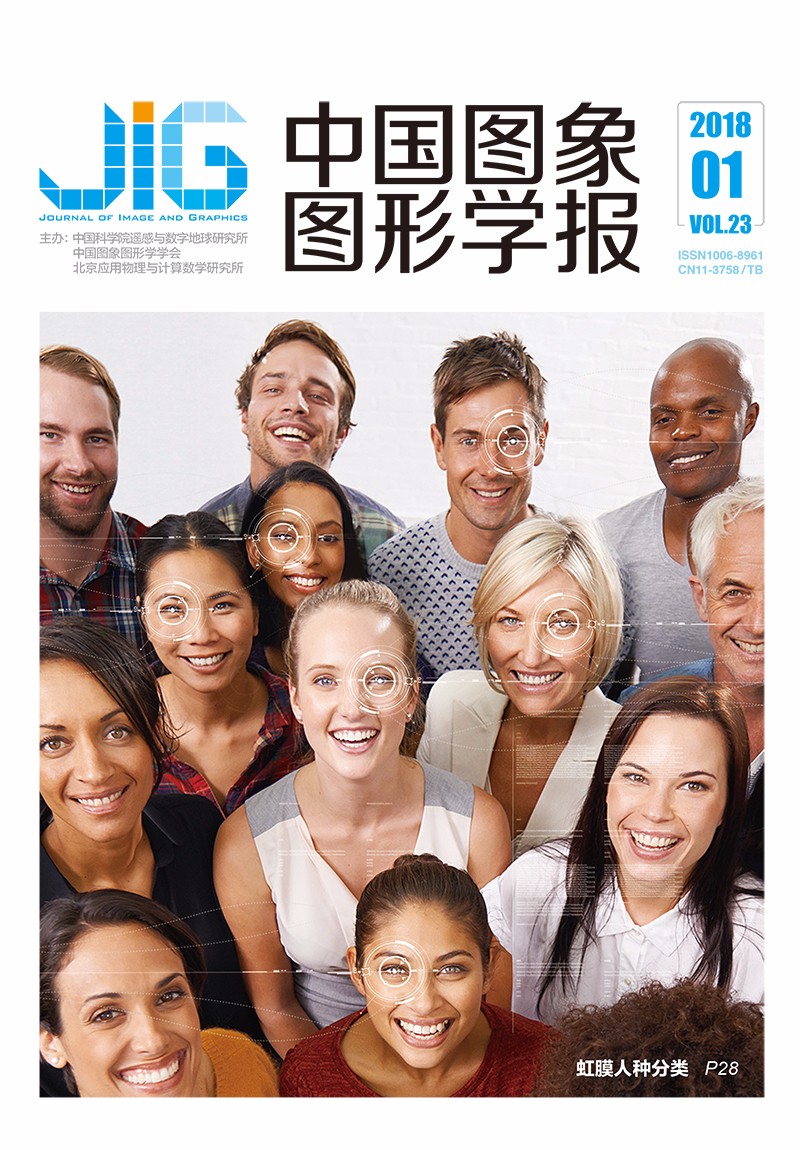
适用于昼夜环境的呼吸率视频检测
摘 要
目的 呼吸率是呼吸疾病检测的敏感指标,基于视频的呼吸率检测方法因成本低、使用限制少等特点成为近年医疗健康领域的研究热点。针对现有方法在噪声抑制及夜间信号获取方面存在的问题,提出一种适用于昼夜环境且抗噪性能高的呼吸率视频检测方法。方法 该方法只需使用夜视功能的摄像头即可实现昼夜呼吸率检测。首先,采用人脸检测确定人脸区域,并结合人体几何关系规范呼吸区域;然后,结合空间尺度及相位差异,采用基于相位的视频处理方法对呼吸区域进行时空相位处理,在突出呼吸区域的同时有效抑制了噪声干扰。采用最大似然法进行呼吸初估计,并结合初估计频率对原信号平滑滤波以优化波形;最后应用峰值检测完成呼吸率的二次估计。结果 通过室内有无光源两种环境的实验可知,稳定光源下呼吸率平均误差为0.54次/min,无光源下平均误差为0.62次/min。本文方法与真实呼吸率有良好一致性,与传统呼吸率检测方法相比,鲁棒性更好。结论 提出一种适用于昼夜环境的呼吸率视频检测方法。采用红外摄像机实现夜间视频采集,并通过胸部定位、基于相位的视频放大技术进行时空相位处理,在拓展空间分辨率的同时有效抑制噪声放大,提高呼吸检测的精度与鲁棒性。
关键词
Respiratory rate estimation under day and night conditions
Huo Liang1, Yang Xuezhi1,2, Li Jiangshan1, Liu Xuenan1, Fang Shuai1,2(1.School of Computer and Information, Hefei University of Technology, Hefei 230009, China;2.Anhui Key Laboratory of Industrial Safety and Emergency Technology, Hefei 230009, China) Abstract
Objective Respiratory rate is a sensitive indicator that can directly reflect the health of the human body for related respiratory diseases, such as Biot's respiration, Cheyne-Stokes respiration, and sleep-related breathing disorders. Video-based respiratory detection, which has the features of low cost and few restrictions, has been an advanced research interest in recent years. Given that normal cameras cannot capture videos and present high noise at night, existing methods cannot handle night environment, which could lead to deviations in respiratory estimation and even to errors. To solve these problems, a respiratory detection method was proposed in this study. The proposed method is appropriate for day and night conditions and has a good anti-noise performance. Method The method was mainly composed of three parts. First, the main face region in videos was confirmed using a Viola-Jones face detector, and the chest region was located by body geometry. We improved the face detection box algorithm to repair the problem that the Viola-Jones algorithm might have a high detection error at night. Second, the chest video was obtained by using a phase-based video motion-processing method, which was combined with spatial scale and phase difference to amplify respiratory movement. We decomposed the original video frames to multiple spatial-scale orientations of phase video sequences. Respiratory signal was extracted by applying average luminance signal operation. Finally, we applied the maximum likelihood (ML) criterion to estimate the respiratory rate by using the signal generated in the second step. The result from the ML criterion could present minimal deviation because breathing waves extracted from the average luminance signal were coarse, which presented the respiratory characteristic unsatisfactorily. Therefore, we used the first estimated respiratory rate as a reference and broadened the frequency band to process the original breathing wave by smoothing filter. Accurate respiratory rate was estimated by peak detection from the smoothed respiratory wave. We solved the problem that normal cameras cannot work efficiently at night by using an active infrared camera. Our method benefited from the extraction of phase information and could thus yield a better performance than those of traditional methods that extract based on luminance information. Result We collected videos under day and night conditions and conducted a quantitative analysis of the result of respiratory detection. Significant robustness improvements were obtained. The average errors were 0.54 times/min in the day and 0.62 times/min in the night compared with those of the traditional respiratory rate estimation method proposed by Alinovi and Zhang. A stability test was performed to verify the best working environment of our method in different video durations and thickness of clothes. Conclusion We propose a respiratory rate estimation method that is appropriate for day and night conditions and exhibits good anti-noise performance. We used an active infrared camera to collect videos at night. The breathing region was highlighted by applying a Viola-Jones face detector. The robustness of respiratory rate estimation was improved by effectively selecting breathing region and restraining noise amplification through the phase-based video motion method, which decomposed video frames into different spatial scales and phase orientations.
Keywords
extraction of breathing wave chest location video motion magnification maximum likelihood estimation respiratory rate estimation
|



 中国图象图形学报 │ 京ICP备05080539号-4 │ 本系统由
中国图象图形学报 │ 京ICP备05080539号-4 │ 本系统由